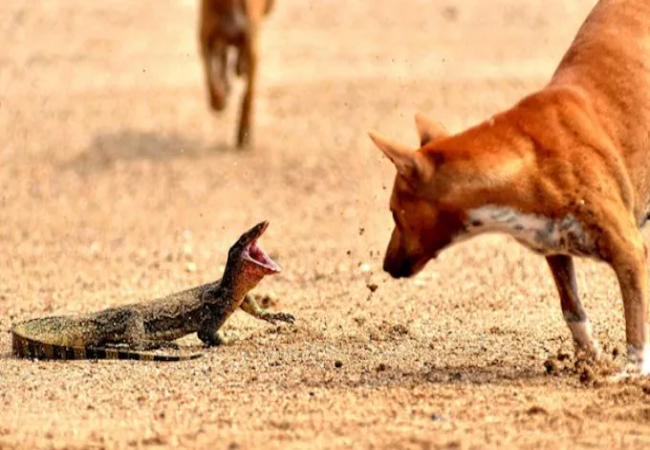Veterinary Guide to Lizard Venom Toxicity in Dogs 2025 🐶🦎🩺

In this article
Veterinary Guide to Lizard Venom Toxicity in Dogs 2025 🐶🦎🩺
By Dr. Duncan Houston BVSc
🧬 What Is Lizard Venom Toxicity?
Several North American lizards—including the Gila Monster and Mexican Beaded Lizard—are capable of envenomating dogs. Their venom, delivered via grooved teeth, is hemotoxic and neuroactive, causing pain, edema, hypotension, and cardiac effects. These large, slow-moving lizards must chew to inject venom in bite events.
👥 Who Is Affected?
- Dogs living or hiking in the southwestern US (AZ, NM, TX, CA) or Mexico, home to these lizards.
- Any breed or size—risk increases with curious or roaming behavior.
⚠️ Clinical Signs
- Severe pain, swelling, bleeding from the wound.
- Hypotension, tachycardia, and arrhythmias detected on EKG/BP monitoring.
- Excessive salivation, tearing eyes.
- Frequent urination, defecation, and weakness.
- Hypothermia, lethargy, possible neurologic signs.
🔍 Diagnostic Approach
- History & physical: witness of bite and live lizard present confirms diagnosis.
- Vital signs & EKG: assess blood pressure, monitor for arrhythmias.
- Bloodwork: often normal except for stress-related changes; bleeding parameters may help rule out secondary damage.
- Imaging: wound evaluation; EKG recommended.
🛠️ Emergency Treatment Protocols
1. Immediate Lizard Removal & Wound Care
- Use scientific methods—pry jaws or apply flame to encourage release.
- Flush and clean thoroughly; remove any teeth fragments.
2. Stabilize Cardio & Pain Management
- IV fluids to treat hypotension and prevent shock.
- Anti-arrhythmics and close EKG monitoring.
- Titrate opioids or multimodal analgesia for severe local pain.
3. Infection Prophylaxis & Supportive Care
- Broad-spectrum antibiotics are used to prevent infection from teeth or the environment.
- Tetanus prophylaxis where appropriate.
- Monitor hydration, body temperature, and wound healing.
4. Monitoring & Recovery
- Frequent EKG and BP checks during the first 48 h.
- Assess wound for infection daily, change dressings as needed.
- Reassess pain control and mobility every 12 h.
📈 Prognosis
- Excellent if the bite is managed quickly and complications are addressed.
- Guarded if arrhythmias or hypotensive shock are severe—mortality rare in healthy dogs.
- Delayed treatment increases risk of infection or systemic shock.
📱 Ask A Vet Telehealth Support
- 📸 Rapid image uploads of bite wounds for remote triage.
- 🔔 Medication reminders for fluids, analgesia, and antibiotics.
- 🩺 Virtual assessments of heart rhythm, pain levels, and wound condition.
🎓 Case Spotlight: “Diesel” the Desert Mutt
Diesel, exploring the Sonoran Desert, was bitten by a Gila Monster. Veterinarians pried the jaws open, flushed the wound, and started IV fluids and opioids. EKG showed slight tachycardia but no arrhythmia. Antibiotics were administered. Ask A Vet provided telehealth support with wound monitoring. Diesel recovered fully within 72 h and returned to hiking within a month. 🐾
🔚 Key Takeaways
- Lizard venom toxicity in dogs is rare but serious, most common with large Heloderma species.
- Bite events often require specialized removal, aggressive pain control, and cardiovascular stabilization.
- Prompt EKG and BP monitoring guides response to venom.
- Broad-spectrum antibiotics help prevent local infection.
- With timely intervention and supportive care, most dogs recover well.
- Ask A Vet telehealth enhances treatment—remote triage, medication coordination, and quality-of-life monitoring 📲🐕
Dr Duncan Houston BVSc, founder of Ask A Vet. Download the Ask A Vet app to access expert care for venomous bites—helping with emergency guidance, telehealth monitoring, medication delivery, and recovery planning 🐶📲






